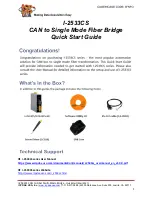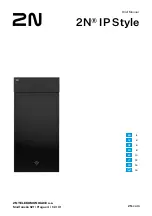
2.3.1 Interrupt Block Diagram
INT\
Level_trigger
INT_CHAN_0
INT_CHAN_1
initial_low
active_high
(to PCI slot)
The interrupt output signal of PIO-DA/PISO-DA series cards,
INT\, is set to
Level-Trigger and Active_Low.
If INT\ generates a low_pulse, the PIO-
DA4/8/16 will interrupt the PC once each time. If INT\ is fixed at low_level, the
PIO-DA4/8/16
will interrupt the PC continuously. So for
the signal pulse_type
for INT_CHAN_0/1 must be controlled and must be fixed at a low_level
state normally and a high_pulse generated to interrupt the PC.
The priority of INT_CHAN_0/1 is the same. If both of these signals are active at
the same time, then INT\ will only be active once at a time. So the interrupt
service routine has to read the status of both interrupt channels to per form a
multiple-channel interrupt. Refer to Sec. 2.3 for more information.
DEMO5.C
→
for INT_CHAN_0 & INT_CHAN_1
If only one interrupt source is used, the interrupt service routine doesn’t have to
read the status of the interrupt source. The demo programs, DEMO3.C and
DEMO4.C, are designed to demons rate a single channel interrupt. See:
DEMO3.C
→
for INT_CHAN_1 only (initial high)
DEMO4.C
→
for INT_CHAN_1 only (initial low)
PIO-DA/PISO-DA Series User Manual (Ver.2.9, Feb. 2011, PMH-009-29 )
11












































